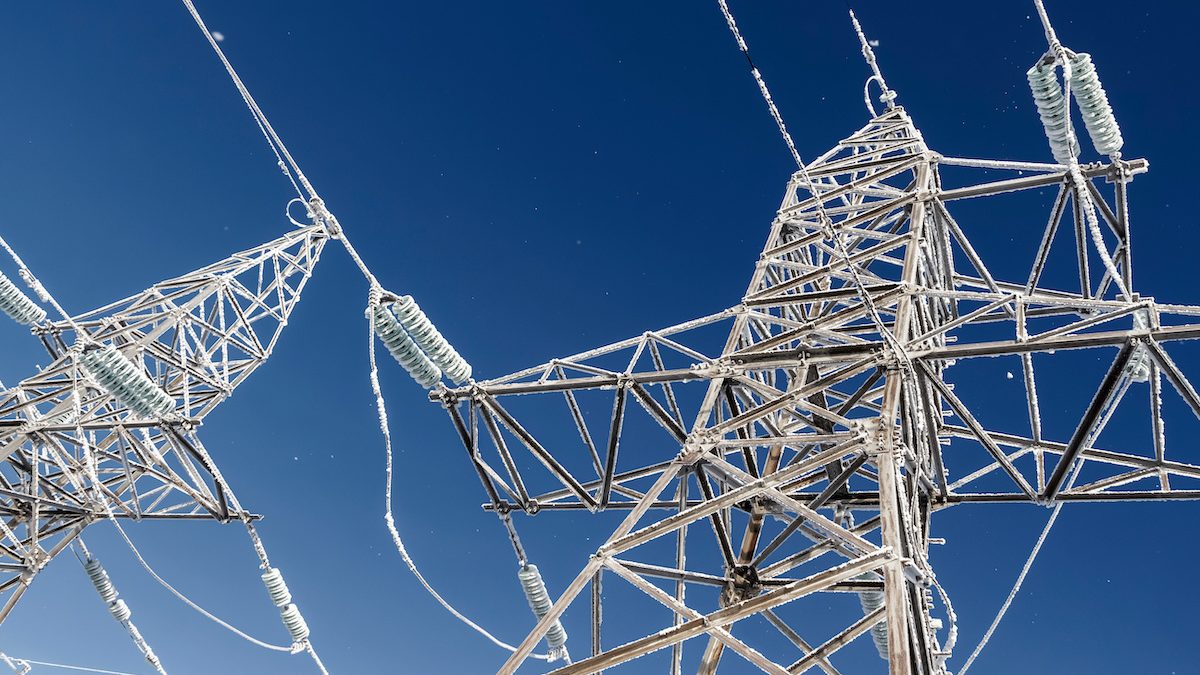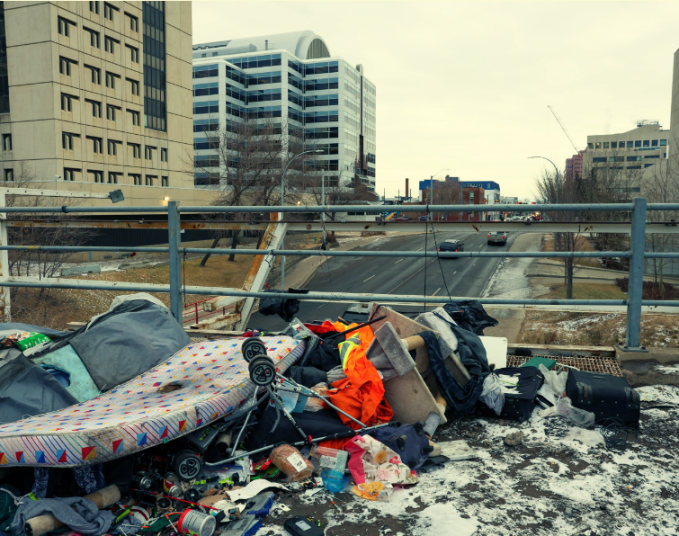Ten days ago, it was so cold my eyelids froze together while walking to get a coffee. Oh, and it almost knocked out the entire province’s energy grid, too. Talk about chilly, eh?
A lot has been said about why we came so close to nearly having to brave a polar vortex in the dark. Everything from the unreliability of renewable energy sources to the strains of an aging grid infrastructure were offered up as explanations for the alerts issued by the Alberta Electric System Operator (AESO).
But while those people were tweeting (xeeting?) and trading partisan barbs, a lot of regular folks were just wondering: “Hey, why do I have to turn off my lights, but all those big office buildings downtown don’t?”
It’s true. While much of the province’s 4.3-million residents did their part to curb our gluttonous suck on the provincial power line’s teat, the lights in some of the biggest buildings and landmarks in both Edmonton and Calgary stayed on.
And people noticed.
“Any reason why Calgary Tower did not take part in the ‘limit your energy consumption weekend?’” posted on annoyed Calgarian Twitter-now-X user.
“Meanwhile, downtown Edmonton and Calgary were lit up brighter than a Roman candle throughout the grid alert,” quipped another.
But it does seem a bit of a double standard, doesn’t it? Especially given the high commercial vacancy rates in both cities downtown cores (Edmonton’s is at 20 per cent, Calgary was sitting at around 32 per cent). So, why then, aren’t we at the very least turning off the lights to those empty portions of the buildings and pretty-yet-unnecessary lighting? We endeavoured to find out.
Municipal Response
Turns out the City of Calgary did take action, including shutting off non-essential lighting and switching to independent power sources in some cases, according to City of Calgary communication’s strategist Sandra Sweet.
“We immediately turned off our winter beautification light features to conserve power. We utilized our generator capacity to reduce grid pressures when requested/needed and are continually exploring additional opportunities for generator-based load shedding,” Sweet said in a statement.
Sweet added that the City was prepared to alter the hours of operation at its recreation facilities as well.
I reached out to the City of Edmonton, to see if it had undertaken any similar actions, but it didn’t respond to my questions.
Big Real Estate
The vast majority of the lights you see in Edmonton or Calgary’s skyline are in buildings that aren’t managed by municipal or provincial government or, often times, even the tenants inside. Instead they belong to private developers and real estate companies. This includes both the Calgary Tower and Edmonton’s iconic EPCOR Tower.
I reached out to EPCOR Tower’s landlord, Qualico Group, to ask what the deal was with turning off the lights, but I was ghosted. Its key tenant (EPCOR, of course), however, told me that while it doesn’t manage electricity use, the utility does limit the use of unnecessary lighting and has energy-saving processes in place year-round.
Aspen Properties is the company that owns, and leases out, the Calgary Tower and many of the other skyscrapers that make up the skyline of both Edmonton and Calgary, I reached out to Aspen Properties to glean some much-needed insight on what the protocols are for large, often empty, office spaces (our associate editor says he used to watch them rotate lighting across floors), but it, too, didn’t respond to my cries for transparency.
So, given our corporate real estate overlords’ onset of muteness, I decided to give some experts on the grid a call to see just how your microwave and Netflix streaming stack up against commercial and industrial ventures.
By the Numbers
Turns out there’s not actually that big of a difference between residential and commercial power draws. Residential energy use accounts for about 20 per cent of Alberta’s energy use, while commercial buildings province-wide account for about 28 per cent of energy demand. That’s according to Caio Bersot, an editor with EnergyRates.ca, a non-partisan company that conducts energy comparison services for residential, commercial and industrial consumers.
Bersot said that while the AESO alert issued last weekend did mention common residential appliances like microwaves and stoves, it wasn’t specifically targeted at just the average citizen.
“It is expected that all pool participants (residential, commercial, farms and industrial) will reduce their consumption,” Bersot said.
And that’s a good thing because the biggest suck on power in Alberta doesn’t come from you turning on all the lights in your house to spite your frugal father, or even from commercial skyscrapers insisting on turning their offices into a scene out of The Backrooms. Instead, it comes from big industry, which accounts for nearly half of the province’s energy use.
But before you start sub-tweeting the CEO of Suncor, Bersot notes that in many cases, big industry chips in to whittle down demand, too.
“According to AESO, they have agreements with some of the larger industries, where they can ask them to either reduce their power consumption, or even temporarily go offline,” Bersot said.
“But Jesse, if even a giant, multinational industrial conglomerate has an agreement, shouldn’t big real estate have one, too?”
Well, probably yes. At the very least as a public relations measure. But, at least according to Bersot and the people over at EnergyRates.ca, there’s less incentive to have those structures in place with commercial buildings due to the hours they typically operate.
“On commercial buildings and office towers specifically, that’s less of a concern because grid alerts are usually issued during peak hours (4 p.m. to 7 p.m.). This is a time when most Albertans are leaving the office and heading home to use their washers, dryers and other appliances,” said Bersot.
So, while it might not make you feel any better about having to play games on your phone (God forbid) instead of your PlayStation, or settle for those lukewarm leftovers, you can sleep soundly knowing that the twinkling of our city skylines have been vindicated and will remain un-infringed.
Savvy AF. Blunt AF. Edmonton AF.




